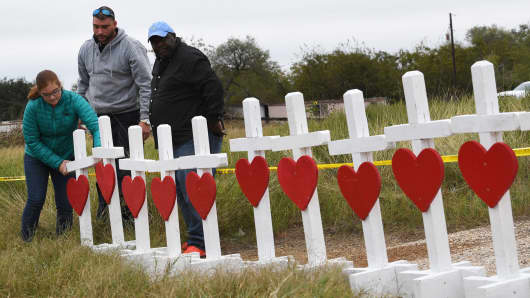President George W. Bush, saw similar successes with his Project Safe Neighborhoods program to focus on gang-connected gun violence, black market gun runners, and other gun crimes. Project SAFE got more than $1.5 billion from the Bush administration. And violent crime fell sharply during the Bush years, even when compared with the already falling crime numbers under President Clinton. Also, note that the focus wasn't on making new rules about what guns were or were not legal. It was all about crime prevention.
Not everyone agrees that more and better funded law enforcement was the real reason for the reduction in crime nationwide that is continuing even now. But the other factors, be they economic or social, are not the kinds of things that can be replicated by an act of Congress.
But speaking of Congress, in 2004 the Republican Congress cut anti-gun funding, presumably under the new fiscal pressures from the war in Iraq. The number of gun crime prosecutions really started to fall under the Obama administration. Federal prosecutors brought a total of 5,082 gun violation cases in 2013 recommended by the Bureau of Alcohol, Tobacco, Firearms and Explosives, compared with a record 8,752 prosecutions of ATF cases brought by the Justice Department in 2004 under President Bush according to the Executive Office of U.S. Attorneys.
So there's the answer, or at least the best answer we can expect from the government. Instead of continuing to do nothing or participating in shouting matches about the NRA, the best and most plausible solution is to rededicate the efforts that worked so well before to reduce gun crimes. The two key elements are focusing on illegal guns and coming up with the cash.
Now, there are those who will argue that cutting down on gun crimes generally is different from needed action to reduce the number of the kinds of mass shootings we've seen in recent weeks and years. But that argument falters a bit when we learn a little more about some of these shooters.
For example, we learned this week that criminal databases meant to keep violent people from buying guns don't work if the folks who are supposed to enter names into that database don't have the time, the will, or the job skills to do it. That's what happened when the Air Force never put the Sutherland Springs shooter's prior domestic violence conviction into the FBI database used in gun background checks. More money and manpower could help make those kinds of screw ups less common.
Improved community policing like we saw as a result of the 1994 crime bill might also produce positive results when it comes to gang-related mass shootings in urban areas. And an extra officer or two in a rural or suburban area could also help local cops keep better tabs on ex-felons and other people who are, as they say, "known to law enforcement."
Now, will such a bill aimed at gun crime crackdowns actually pass?
Yes.
There are a number of factors that tell us why. First, you do have national outrage over these shootings that most politicians clearly want to respond to in some way. A bill that focuses on boosting existing law enforcement will not satisfy the most passionate gun control advocates, but almost everyone else will see it as a step in the right direction. Democrats can also ride the fact that Republicans killed the funding for this kind of plan back in 2004 if they want to score partisan political points.
Second, congressional Republicans from blue states and swing districts who are getting more and more worried about the 2018 midterm elections need something like this to take home to their voters.
And President Trump, who seems most at home when he's talking law and order issues and praising police should have no problem backing a plan to give them more manpower and financial support. That's especially true if some of the money is earmarked for better weapons interdiction at the U.S.-Mexican border.
The only stumbling block would be the deficit hawks who may hold up such a bill with demands of corresponding cuts coming from somewhere else. But those hawks would be a lot wiser to choose a less urgent issue to make their stand.
Again, this is not a fairy tale proposition. Increasing federal spending to effectively reduce gun crimes is already a proven bridge-building process even in Washington. But yes, somebody in power is going to have to start the ball rolling. Law and order Republicans like Rep. Peter King in the House could join with a Democrat like Senator Heidi Heitkamp of North Dakota to start the process. King makes sense because of his seniority and his anti-crime branding and Heitkamp has already proven to be a Democrat who's number one goal does not seem to be embarrassing and attacking President Trump. That's what it's going to take from both parties to clear the hurdles in this current political environment. But it's not impossible.
The good news is that the blueprints are already available and the popular support for it is almost guaranteed.
Commentary by Jake Novak, CNBC.com senior columnist. Follow him on Twitter @jakejakeny.
For more insight from CNBC contributors, follow @CNBCopinion on Twitter.



